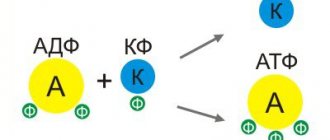https://twizz.ru/wp-content/uploads/2020/03/1585212123_5f27f0793c4ddcf597926dbf40d06cd9.jpg
If Karl Benz, who gave the world the first car with a gasoline engine back in 1885, saw what speeds modern models reach, he would be delighted.
The three-wheeled Benz self-propelled carriage was moving at a speed of 16 km/h. Today, a car can accelerate to 400 km/h and above.
Fans of fast driving monitor the emergence of new products from leading manufacturers; many are interested in the ranking of the fastest and most powerful supercars.
We have collected the top 10 fastest cars for 2020. When compiling the rating, the maximum speed of the cars, which was officially registered, was taken into account. The list includes only mass-produced passenger supercars; concept cars and other one-off examples were not taken into account.
Hennessey Venom F5
hennesseyperformance.com
- Top speed: 484 km/h
- Acceleration dynamics from 0 to 100 km/h: 2.3 sec
- Engine capacity: 6.6 l
- Engine power: 1842 hp
- Vehicle weight: 1338 kg
- Cost: $1.6 million
A sports two-door coupe produced by the American company Hennessey Special Vehicles, Texas. Presented in 2017 at an exhibition in Las Vegas, it has not yet entered production.
Equipped with a V8 petrol engine with a power of 1842 hp, a volume of 6570 cm³ with double turbocharging and a semi-automatic 7-speed gearbox. The body and chassis are made of high carbon fiber (carbon).
It is planned to produce only 24 pieces, the preliminary price is 1.6 million dollars. The company said it leaves the choice to customers.
Bugatti Chiron Super Sport 300+
bugatti.com
- Top speed: 482.8 km/h
- Acceleration dynamics from 0 to 100 km/h: 2.5 seconds
- Engine capacity: 8.0 l
- Engine power: 1600 hp
- Vehicle weight: 1978 kg
- Cost: 3.5 million euros
The French hypercar from Bugatti (part of Volkswagen AG) was named the fastest car in 2020. The 300+ series digital index means exceeding the maximum speed of 300 mph (482.8 km/h). The two-door sports coupe is a new model based on the Veyron platform. Named after the best racing driver on the planet, Louis-Alexandre Chiron, who drove for Bugatti for 30 years.
Equipped with a 16-cylinder W-shaped engine producing 1600 hp. and a volume of 7993 cm³ with 4 turbochargers and a 7-speed automatic transmission.
It is planned to produce 30 copies at a price of 3.5 million euros, the first customers will receive the car in 2021.
A week before the announcement of this model, a Chiron prototype was tested at a test site in Germany, which managed to accelerate to 490.484 km/h. The production model fell slightly short of this mark.
Koenigsegg Agera RS
koenigsegg.com
- Maximum speed: 445 km/h
- Acceleration dynamics from 0 to 100 km/h: 2.5 seconds
- Engine capacity: 5.0 l
- Engine power: 1360 hp
- Vehicle weight: 1295 kg
- Cost: $2.2 million
Swedish manufacturer Koenigsegg released the Koenigsegg Agera RS in 2020. The two-door hypercar with a coupe body is made of aluminum and weighs 1295 kg. The supercar is equipped with an automatic robotic 7-speed gearbox with two clutches.
In 2020, the Koenigsegg Agera RS became the record holder for the fastest acceleration from 0 to 400 km/h – in 33.87 seconds.
A 19-kilometer section of the highway in Nevada, USA was chosen for speed testing. In the second stage, the driver was able to accelerate the Agera RS to 456 km/h.
Absolute records
The fastest cycling speed was firmly established by the Dutchman Fred Rompelberg. The race was organized on the salt flats in Utah, USA in 1995. The record holder managed to accelerate the bike to 268 km/h. Of course, we thoroughly prepared to achieve this result - the maximum transmission ratio, ideal weather and road conditions, the endurance of the athlete and the “air bag” of the racing car ahead.
This bike set a world record
The year 1995 was also marked by a world record for the fastest bicycle on a descent. Then, in France, the famous downhiller Christian Taillefer was able to get off the mountain on two wheels and reach a value of 212 km/h! The difficulty of the record was that a well-worn ski slope was prepared for the descent. And to control a bicycle and, especially, to drive it at such speed in these conditions is simply out of the realm of fantasy!
The maximum possible speed that a mountain bike was able to reach is 130 km/h. The record was set while descending a volcanic slope in Nicaragua. The credit goes to French cyclist Eric Baron.
In the last decade, the bicycle has been able to accelerate to 210 km/h. The record was set in 2010 by Markus Stolz in the Chilean mountains. A year earlier, the highest speed on a semi-closed league was recorded - more than 130 km/h.
SSC Tuatara
sscnorthamerica.com
- Top speed: 443 km/h
- Acceleration dynamics from 0 to 100 km/h: 2.5 seconds
- Engine capacity: 7 l
- Engine power: 1350 hp
- Vehicle weight: 1247 kg
- Cost: $1.5 million
An American supercar from Shelby Super Cars, production of which was launched in 2014. The name Tuatara comes from the New Zealand reptile with which manufacturers associate the rear wings of the car.
The hypercar is equipped with a seven-liter V8 engine with twin turbocharging and 1350 hp. and a 7-speed manual transmission.
Hennessey Venom GT
hennesseyperformance.com
- Maximum speed: 435 km/h
- Acceleration dynamics from 0 to 100 km/h: 2.5 seconds
- Engine capacity: 7 l
- Engine power: 1451 hp
- Vehicle weight: 1338 kg
- Cost: $1.2 million
The American sports car from Hennessey Performance Engineering (California) was produced in the period 2010-2016. A total of 12 units of two modifications were produced (6 two-seater roadsters and a coupe each), although previously it was planned to produce 29 cars.
The Hennessey Venom GT was released with a 6.2-liter Chevrolet Corvette ZR1 engine with two turbochargers producing 1000 and 1200 hp. Subsequently, the engine capacity was increased to 7 liters with a power of 1451 hp.
In February 2014, the coupe reached a speed of 435 km/h in a single race at the Kennedy Space Center.
Rhino swim: an amphibious vehicle with very strange wheels
All-terrain vehicles, as well as amphibious vehicles, always attract increased interest from technology enthusiasts. One of the strangest specimens in this area is Rhino. The main feature of the all-terrain vehicle was its non-standard wheels, which were able to ensure the success of the vehicle.
Here's a machine. /Photo: pinterest.ru. The invention of the wheel in the 3rd millennium BC was one of the greatest achievements of our ancestors. From that time on, people stopped “rolling square” and began to travel more and more comfortably from century to century. In the 20th century, engineers began to rethink many familiar things. One of the innovators was a brilliant American inventor with Greek roots named Eli Ezhnides. In 1940, while observing the work of tracked bulldozers, an engineer began to think that such machines spend too much useful energy to cover even the most modest distances.
Back view. /Photo: lunohoda.net. The master spent the next 14 years developing a fundamentally new machine, which was called the “Rhinoceros”. It is worth explaining that the engineer took so much time to develop for one reason only - he worked on the project only in his free time from his main work at the plant. The presentation of Rhino took place in 1954.
The car could float.
/Photo: grol1410.livejournal.com. The result was a five-ton, 5.8-meter vehicle that was unlike anything the world had seen before. What’s more interesting is that the car was also an amphibian. The driver was in the front of the vehicle, right on the round nose. Below it was a double round chassis. The diameter of each wheel was 2 meters. The all-terrain vehicle had a steel frame that supported an aluminum body. Great development. /Photo: deadbees.net. Subsequent testing helped establish that the Rhino is indeed good at traversing swampy and rugged terrain. Sand and mud also did not become a serious obstacle for the amphibian. A nice addition was the ability to rotate 360 degrees. The maximum speed of the Rhino reached 72 km/h. I could ride on my side. /Photo: 4kolesa.mirtesen.ru. The car was driven by a Ford engine. Thanks to the low center of gravity, the vehicle turned out to be extremely stable and could even stand on one wheel or on its side without turning over! Rhino also had a ship's engine, which allowed it to accelerate afloat to 5 km/h. Continuing the topic, read about the experimental all-terrain vehicles of the USSR, on which great hopes were pinned and more. Did you like the article? Then support us, click:
Rhino running speed
Bugatti Veyron Super Sport
bugatti.com
- Top speed: 431 km/h
- Acceleration dynamics from 0 to 100 km/h: 2.5 seconds
- Engine capacity: 8 l
- Engine power: 1200 hp
- Vehicle weight: 2200 kg
- Cost: 1.95 million euros
The Veyron Super Sport model was produced in 2010-2011, named after the legendary racing driver Pierre Veyron.
The supercar is equipped with an eight-liter turbocharged W16 gasoline engine with a power of 1200 hp. and automatic 7-speed transmission.
In 2010, maximum speed tests were carried out at the Volkswagen AG test site in Ehra-Lessin. On the first attempt, the supercar showed a result of 427.933 km/h, on the second the mark was recorded at 434.211 km/h. The result was an average result of 431 km/h, and at that time the Bugatti Veyron Super Sport became the speed record holder among production cars.
A total of 48 copies were produced.
About the speed of a running elephant in km/h
An interesting fact: to find out how fast an elephant runs, scientists conducted a series of experiments involving 42 elephants, which were selected from 300 other individuals of this species. Special running tracks were built for each elephant. In total, scientists conducted about 200 tests, on the basis of which conclusions were drawn about the maximum speed of the Indian elephant. Elephants do not need to run fast because they do not need to catch other animals for food; they are herbivores. And due to their impressive size, few people dare to attack them, especially since elephants move in groups, so they don’t need to run.
Based on the experiments conducted, it became known that the elephant runs at an average speed of 16 km/h. But if something frightened the elephant, or caused him aggression, he will run at a speed of 48 km/h. Elephants have strong blows even without a run-up, especially if they pick up speed, the attackers cannot resist.
| Elephant species | Max. speed |
| Arikan | 35-40 km/h |
| Asian | up to 48 km/h |
| Indian | 35-40 km/h |
| Forest | 35-40 km/h |
| Bornean | up to 48 km/h |
Other animal speeds
African elephants
They are also called savannas. It is the largest living land animal today. His huge body is supported by powerful, stocky legs. The height of these animals reaches 3.2-4.0 meters, length 6-7.5 meters, the average weight of males is 7 tons. The maximum recorded weight of an African elephant is 10 tons. Despite being so large, savannah elephants are characterized by amazing mobility. They can swim perfectly and move along the bottom of a reservoir. These elephants walk at a speed of 3-6 km/h, and are also capable of running at speeds of up to 35-40 km/h. These animals sleep standing up, for which they gather in a group and press tightly against each other. Their sleep duration is usually approximately 40 minutes.
Asian elephants
They are usually smaller than savannah elephants, but they are also impressive in size. The weight of old males reaches 5.4 tons, with a height of 2.5-3.5 m. Younger males weigh about 2.7 tons. The smallest subspecies from Kalimantan weighs approximately 2 tons. The Asian elephant has a body length of 5.5-6.4 m, and the length of its tail reaches 1.2-1.5 m. The number of caudal vertebrae is 33. Asian elephants are characterized by agility and mobility. They have a well-developed sense of balance. Feeling anxious, they can run at speeds of up to 48 km/h. When running, an elephant raises its tail, thereby giving a sign to its relatives of an impending threat. Asian elephants can swim well. Adults move at a speed of 6.8 m/sec, which corresponds to 24 km/h, as a running person moves. When running, they, like humans, bounce with their feet, which creates a “grasshopper” effect.
Indian elephants
An anxious Indian elephant can run at speeds of up to 48 km/h. When running, an elephant raises its tail to warn its relatives of danger. African elephants usually move at a speed of 2-6 km/h, but can run at speeds of 35-40 km/h.
Forest elephants
They are the smallest of all representatives of the genus. With an average height at the withers of females 144-155 cm (males are slightly higher), they have a body 160-286 cm long, weighing 2.7-6 tons. These elephants are very mobile and can swim well. They move at a speed of 3-6 km/h, and can run at a maximum speed of 35-40 km/h.
Bornean elephants, or Borneo pygmy elephants
They are a subspecies of the Asian elephant. They live in the northeastern part of the island of Kalimantan. There is still much debate regarding the origin of this subspecies. In 1950, it was described in his works by the Sri Lankan zoologist Paulus Deraniyagal from a photo in the National Geographic publication. But according to the rules for describing species, the description should be based on living specimens, which was not done. An alarmed Bornean elephant can reach speeds of up to 48 km/h.
SSC Ultimate Aero TT 2009
wikipedia.org
- Top speed: 421 km/h
- Acceleration dynamics from 0 to 100 km/h: 2.8 sec
- Engine capacity: 6.4 l
- Engine power: 1187 hp
- Vehicle weight: 1247 kg
- Cost: $1 million
The supercar produced by SSC North America is an updated version of the first SSC Ultimate Aero TT in 2007, produced in 2009-2011.
Equipped with a turbocharged Chevrolet Twin Turbocharged V8 gasoline engine, thanks to the use of a new power system, it was possible to increase power by approximately 19% (up to 1187 hp), engine capacity also increased to 6.4 liters.
The manufacturer predicted a top speed of more than 430 km/h, but during testing the supercar was only able to reach 421 km/h.
Why does an elephant have a trunk?
Elephant trunk
The trunk is a universal organ for an elephant; it performs many actions with it:
- pulls out the grass (if the grass is low, first loosens the ground with your feet);
- plucks leaves and fruits from trees:
- collects water (trunk capacity up to 6 liters):
- hits the ground with it in a fit of aggression and rage;
- hugs when meeting relatives.
Interesting: Why did mammoths become extinct? Hypotheses, photos and videos
Throughout their life (an average of 70 years), elephants change their molars several times. By the age of forty, this process stops.
Bugatti Chiron Sport
bugatti.com
- Maximum speed: 420 km/h
- Acceleration dynamics from 0 to 100 km/h: 2.5 seconds
- Engine capacity: 8 l
- Engine power: 1500 hp
- Vehicle weight: 1977 kg
- Cost: $3.2 million
The Chiron Sport series sports car was launched into mass production in 2018 by the French company Bugatti.
The two-door coupe on the Veyron platform is equipped with an eight-liter W16 engine with 4 turbines and turbocharging, producing 1,500 hp. and automatic 7-speed transmission.
Rimac Concept Two
rimac-automobili.com
- Maximum speed: 415 km/h
- Acceleration dynamics from 0 to 100 km/h: 1.85 seconds
- Engine power: 1914 hp
- Vehicle weight: 1950 kg
- Cost: 1.8 million euros
The self-driving electric car Rimac Concept Two, produced by the Croatian company Rimac Automobili, was first presented in 2018 at the Geneva Motor Show. The developers position this model as a challenge to the American Tesla car.
The supercar is equipped with four electric motors (one for each wheel) with a total power of 1914 hp, which allows acceleration from 0 to 100 km/h in just 1.85 seconds. In 2020, the Rimac Concept Two is the fastest electric car in the world.
Only 150 copies are planned to be produced, the first models were sold out within 3 weeks after the presentation, at a price of about 1.8 million euros.
Koenigsegg Regera
koenigsegg.com
- Maximum speed: 410 km/h
- Acceleration dynamics from 0 to 100 km/h: 2.8 sec
- Engine capacity: 5 l
- Engine power: 1600 hp
- Vehicle weight: 1590 kg
- Cost: $1.9 million
The luxury Swedish hypercar Regera (translates to reign) was released in 2020, and production continues to this day. Equipped with a five-liter twin-turbocharged gasoline engine with a power of 1600 hp. and three electric motors (on the rear wheels and the crankshaft).
This hybrid car does not have any special records in terms of dynamics (from 0 to 100 km/h in 2.8 seconds) and maximum speed (410 km/h), but these figures are quite impressive.
A total of 80 copies were planned to be released at a price of 1.9 million US dollars, half of which were immediately sold out on pre-order.
Record in a straight line
You cannot compare the speed of a bicycle going down a mountain with the speed of a bicycle moving in a straight line.
Therefore, these disciplines have different achievements and different record holders. First we will describe the direct speed record on a bicycle.
Story
As we have already said, different people tried to achieve maximum speed on a bicycle. Each of them was a record holder for some time, until his performance exceeded the next record.
Charles M. Murphy was the first to decide to accelerate on a bicycle. This was back in 1899.
The cyclist was riding between two rails, and a single carriage with observers was rolling in front of him. However, the role of the carriage was not only to transport spectators. It protected the rider from the oncoming air flow.
Thanks to this trick, Murphy was able to accelerate to 100.2 kilometers per hour. At that time, this was the maximum speed that could be achieved on a bicycle.
The second to try his luck was Albert Marquet. This was in 1937, 38 years after Murphy's record.
Marche followed the car on a bicycle, to which a canopy was attached, as well as a carriage, which protected the cyclist from the wind.
As a result, Marche was able to reach a speed of 139 kilometers per hour.
The third cycling record holder was Alf Letourne. He allowed Marche's achievement to last only five years and established his own already in 1942.
Letourne was driving not an ordinary car, but a racing car. His bike had an oversized carriage that looked like it was about to hit the ground.
Letourne was able to accelerate to 175 kilometers per hour.
Modern absolute record holder
The speed record that still stands was set by Fred Rompelberg. This happened in 1995, when Rompelberg was fifty years old.
Rompelberg was also driving behind a race car with a wind canopy installed.
As a result, the driver was able to accelerate to 268 kilometers per hour. This figure still surprises even motorists. What can we say about cycling enthusiasts?
To date, no one has been able to beat this achievement.
Other modern records
Not all cyclists considered it fair that the maximum speed on a bicycle was developed with the help of a giant canopy. Therefore, those records are also identified for the establishment of which such massive “auxiliaries” were not used.
The speed record for installing a smaller fairing on a bicycle was set by Sebastian Bowyer. This happened in 2013.
Bowyer was able to accelerate to 133.78 kilometers per hour over a distance of 200 meters. It is noteworthy that during acceleration the cyclist lay on his back and turned the pedals, which were installed in front. The bicycle itself was “packed” in a light fairing. It was created from carbon fiber.
This interesting device, almost unlike an ordinary bicycle, was designed by students. Students from the Delft University of Technology and the Free University of Amsterdam worked together on the project.
We have already mentioned the record at the velodrome. It was directed by Francesco Moser in 1984.
Few people know that in order to reach maximum speed on a bicycle, the rider used blood doping. However, at that time such substances were not yet prohibited.
Tour de France. One of the most famous cycling races in the world. In 2005, it set its own record, authored by the well-known cyclist Lance Armstrong. On a straight surface, it accelerated to 41.654 kilometers per hour.
It is worth noting that the maximum speed developed during the descent from the mountain in the Tour de France was not recorded. However, it is known that athletes at this moment accelerate to approximately 90 kilometers per hour.
The mountain biking record is worth telling separately.











